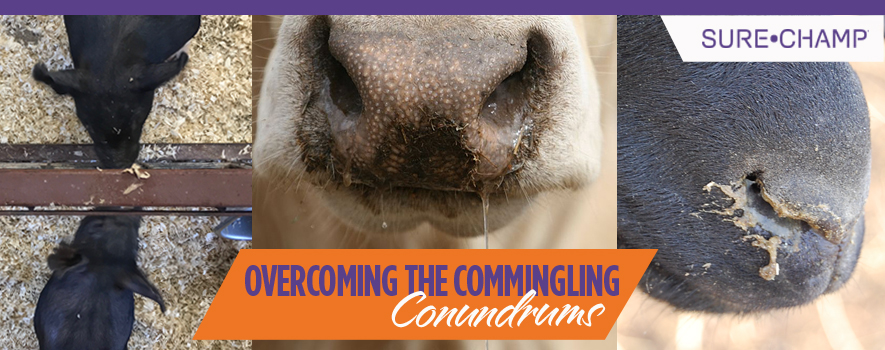
If you are a parent, you understand about the ‘back to school sniffles’ and even though most kids return to school in the heat of summer, they are likely to show up with some type of cold or congestion within the first few weeks of school. They are in a new, enclosed environment with countless “friends” giving each other high-fives, fist bumps and sharing general cooties.
Just like your kids going back to school, your new livestock show projects are probably going to have a case of the sniffles too. You’ve searched far and wide for some of the best show prospects your budget can handle, and now you are bringing multiple animals from multiple farms of origin to your barn. But not to worry; there are ways to avoid the commingling conundrums.
There are two schools of thought when introducing new animals to one another, and you should choose which works best for your scenario and show barn. You can either quarantine the animals and keep them separate from one another once they have arrived at their new home. Or, you commingle your new animals from the very beginning. The second option might be less traumatic on the animals since they will only be stressed one time, and they won’t have to start over sharing spaces with other animals once they have already gotten used to their new surroundings.
Once you have brought your animals to their new home, it is important to keep their health and well-being top of mind. Just like moving your kids into the new environment of school, moving livestock into a new setting causes stress as well. Be sure all animal vaccinations are current when you bring them to their new home, and treat them with an antibiotic at the first signs of any sickness.
Make sure your new livestock projects keep eating. It is important to feed them at the same times each day, and make sure they have plenty of fresh water to keep them hydrated. Another way to ensure they stay healthy and keep eating is to include Vita Charge® Liquid Boost® in their diets for the first few weeks while they acclimate to their new surroundings. This is especially easy to add to show pigs’ water through a medicator, but can also be used with cattle, lambs and goats in their feed or water.
If you do have access to the feed they were on at the breeders or original owner’s, try to keep them on that same feed and slowly transition them to the feed of your choice once they have adapted to their new environment. This will reduce the amount of stress they experience at one time.
And speaking of stress, look for signs of stressed and sick animals daily at feeding time and throughout the day. Are your animals eating? A poor appetite is a sure sign that something isn’t right with your animal. Watch their energy level and behavior. Younger animals are typically full of pep and vigor. If they don’t “bounce back” to their typical energetic selves within a few days of being brought home, something isn’t right.
If you are truly concerned about your animal’s health, take its temperature or call the veterinarian. Just like your kids, your animals should run a normal temperature, have bright eyes and noses that aren’t runny.
Just like putting a group of kids together usually results in health challenges, commingling your new show prospects will cause some challenges too. With proper care, nutrition and reducing as much stress as you can, your new show prospects will adapt with minimal sniffles.

